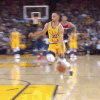Indeed wrote:Reignman wrote:I_Like_Dirt wrote:So what would you define as parity, reignman? And by that, I mean something quantifiable, not something that arbitrarily meets your individual definition of the word 'fair.' The NBA isn't really so far off the levels of parity that are witnessed in the NHL or even the NFL. The NFL has comparable disparity in team spending to what the NBA has had over the past few seasons.
The NBA can never be like the NFL. It doesn't have the revenues and it's a game that relies on a lot less players. The NFL's revenues aren't due to every team having a chance. They're due partly to gambling, but also partly to the fact that football is a game played by way more people in the US than basketball is. That breeds more fans that will go see games even in smaller markets, and even there, there are some teams that are perenially good in the NFL.
Here's what parity would mean for me:
- Hard cap (Let's say $60 mil cap with a $45 mil floor)
- Franchise tag with no max
- No sign and trades
- No exceptions (MLE/LLE)
- Shorter contracts (I like the idea the owners put out - 3 years for FAs, 4 years for your own FAs and 5 years for the franchise tag)
- (maybe) 2 1st round picks for non-playoff teams
Hmm, does that lead to parity?
I am seriously doubt Hard cap can lead to parity.
What you are assuming is, all the cities are the same, players would go for the money. Therefore, every team with the same cap will result in competition. But there are too many reasons that it will not fall into those assumptions, tax rate for instance.
Tax rate is already accounted for by the NBA. For eg, there are some exceptions for high tax regions like Toronto/Canada built into the payroll. Couple that with some schrewd accounting and the difference is negligeable. Especially when you factor in the no max franchise tag with hard cap.


















